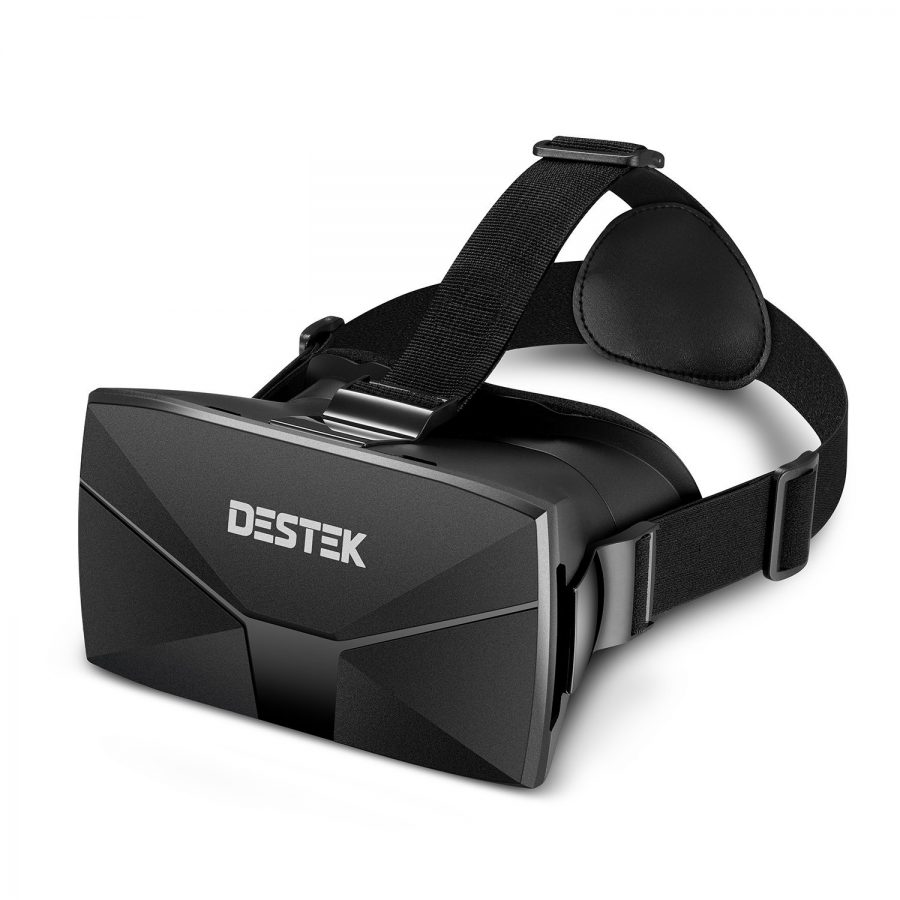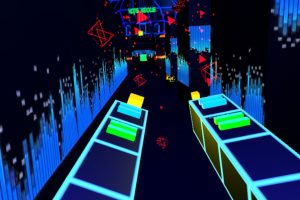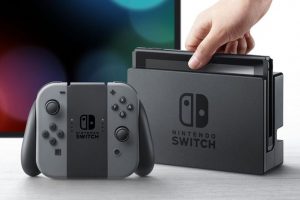The noble purpose behind Google Cardboard headsets is to offer a simple, low-cost way of providing a workable virtual reality (VR) platform for use with our existing Android- or iOS-based smartphones. This has proven a nice success story for both Google and VR enthusiasts, highlighted by the recent high profile inclusion of a Google Cardboard viewer in the November 8, 2015 edition of the print version of The New York Times.
The basic components of Google Cardboard are cut cardboard, 45 mm focal length lenses, magnets or conductive lever, a hook and loop fastener (don’t say Velcro), and a rubber band, along with your own smartphone of up to six inches in size (earlier versions of Google Cardboard maxed out to device sizes of about 5.7 inches). Once Google Cardboard is assembled, your smartphone is inserted in the back of the device and held in place by the fastener.

The box.
While you can fashion your own Google Cardboard or buy low cost commercial versions, some manufacturers, like DESTEK, with their 3D VR Reality Headset, offer a more premium product. Features of the DESTEK offering include foam padding, adjustable straps, and fresnel lenses. For that latter feature, which is a flat lens made of a number of concentric rings to reduce spherical aberration, DESTEK says, and I quote, “reduce clarity to protect your eyes and for longer time use without dizzy, also it have reasonable focal length without any adjustments, but need several minutes to adapt 3D scenes to make it more clear. Suitable for myopic within 300 degree, but not for presbyopia. ” Ahem. To summarize, that basically means it works in a slightly different way than the usual Google Cardboard design.

What you get.
The package includes the glasses themselves, two nose pads, thinner padding for inserting thicker phones, a cleaning cloth, a manual, and an NFC tag (a sticker). Of course, my Apple iPhone 6 Plus doesn’t support NFC, which is a feature found primarily in many Android phones, but that’s probably OK though, since there are no instructions on what do with the NFC tag. I’ve also read reports that when NFC does actually work with this, it takes you to a defunct app. It’s not really important either way.

A closer look at the optics.
The DESTEK 3D VR Reality Headset leaves out any magnet or conductive lever to control the phone, so once it’s placed in the holder (which does close with a magnet), that’s that. I did have a Bluetooth remote shutter button from a selfie stick I previously reviewed, but that doesn’t seem to provide the right functionality. An optional Bluetooth Remote Controller is available from DESTEK at a discount, which offers – depending upon the platform – functions like a mouse cursor, separate play/pause key, and previous/next key controls. Unfortunately, I didn’t have one for review, so I can’t speak to how well it works.
My test platform was my iPhone 6 Plus, but of course should work with most any Android- or iOS-based phone, as long as it runs a relatively recent version of the respective OS and doesn’t exceed 6 inches in size, while being a minimum of 4 inches (the inside of the front cover holder is 6.25 x 33.46 inches, or 159 x 85 millimeters, so your phone will have to fit in that). When inserting my phone, I was unable to close the 3D VR Reality Headset‘s front compartment without removing the Rokform case from my iPhone (yes, even with the thinner pad). That’s annoying, but not unexpected given the already generous uncased size of my phone.

Where you insert your phone.
While there are various apps and demos (DESTEK says to look for “VR games” and “3D split screen” videos) for Google Cardboard to try, I went straight to the Google Google Cardboard app on the Apple App Store. One of the steps is finding the QR code on the viewer, which this one doesn’t have, so I skipped that step. It still worked just fine without that step, but without a way to acknowledge prompts, it’s a barely functional experience. It did at least let me move about in the various demo worlds (just be careful when walking about your room since you can’t see outside the viewer!).
I also tried the Vrse – Virtual Reality app, one of several recommended from the Google Cardboard app. I streamed The Displaced and caught the beginning before it crashed. I then downloaded U2’s Song for Someone from this app, as well as Walking New York. Needing no more interaction than you walking about and turning your head, those videos worked far better and were pretty immersive. Since I have no specific controls, I didn’t bother trying any games.

My iPhone 6 Plus didn’t allow the door to close until I removed the pictured Rokform case.
Unfortunately, there’s a somewhat narrow field of vision here and no way to adjust focal distance – both by design – so it either works well with your phone and eyes out of the box, or you’re out of luck. Having not tried other Google Cardboard solutions, I can say I felt a bit wonky eye-wise after removing the headset, as well as mildly nauseous, which may or may not be my reaction to all of these, or just the way this particular product affects me. Comfort-wise, it could be a lot better, but I had no major issues for short sessions with the strap or the nose piece. I didn’t even bother adding one of the pads for the latter, but I suspect for longer sessions I’d want to.
Considering the higher price, lack of certain Google Cardboard features, and poor comfort (don’t even try using this with glasses), I have a hard time recommending the DESTEK 3D VR Reality Headset. It’s probably best to save some money and go for one of the many other options available instead. In fact, that’s what I’m going to do, since this tease at the potential and possibilities of cheap VR certainly whet my appetite for a better solution.
Thanks to DESTEK for the discounted review unit.






 Your total news and information resource for all things Science, Technology, Engineering / Mathematics, Art, and Medicine / Health.
Your total news and information resource for all things Science, Technology, Engineering / Mathematics, Art, and Medicine / Health.
Leave a Comment